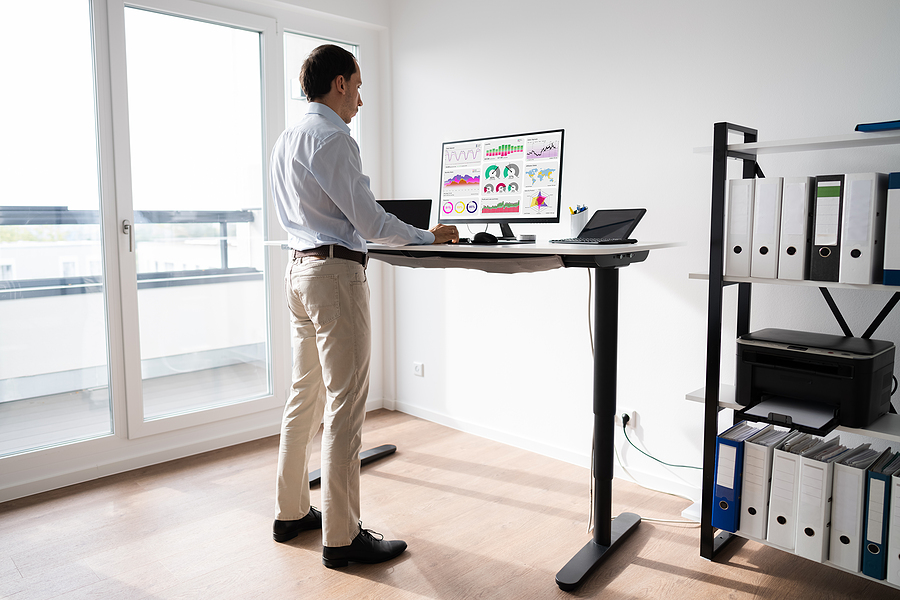Standing desks are being adopted in many workplaces over the United States. A standing desk is motorized. Thus, with the simple push of a button, an electric motor moves the desktop up or down. This feature allows shifting between standing and sitting positions during a working day. A corner standing desk of this type is one of the fastest-growing employee benefits in the country. Employers and companies are investing many resources to procure such desks.
It is estimated that 2% of office workers in America already use a standing desk. This figure is expected to grow rapidly. Even among people that usually work at home as freelancers, the standing desk is becoming more popular. However, in this sector, the adoption rate is slower because of the price a motorized desk commands. But price should not discourage you. You can build a standing desk. Some manufacturers sell kits with all the components to build one.
A More Dynamic Working Attitude
Table of Contents
With a motorized desk, an office worker can sit and stand whenever they choose to do it. This adds more dynamism to their work. Being constantly up and down breaks the monotony of office work. It makes people more collaborative, more creative, in a word, more dynamic. A standing desk will help you to be less sedentary. We all know that a sedentary lifestyle is not good for anyone’s health.
Prevent Chronic Diseases
Currently, many Americans worry about leading a healthy lifestyle. For many decades, America suffered from stereotypes that described unhealthy lifestyles in the US. However, people across the country mind their diet, exercise, and do many other activities to keep healthy and fit. It is normal to see that American office workers want to remain healthy at work also. Standing desks contribute greatly to this goal by:
- Reducing the risk of obesity. Several studies have demonstrated that standing on your feet burns calories;
- Reducing the risk of diabetes. The most common way to favor the development of diabetes is by sitting or sleeping after meals. A standing desk offers the possibility to stand after eating. According to a clinical study, it may reduce the risk of developing diabetes by a whopping 43%;
- Reducing the risk of heart disease. Scientists have established a firm link between a sedentary lifestyle and the risk of heart disease. Sitting for many hours every day is responsible for a 147% higher risk of developing cardiac problems. Standing while working tackles this problem effectively;
- Lowering the cases of back and neck pain. Sitting for many hours in unnatural positions is the main source of back and neck problems in office workers. Hence, being able to shift between sitting and standing can alleviate this problem.
These health benefits are backed by the results of multiple scientific studies. No doubt investing in a motorized desk is investing in your health.
Conclusion
The standing desk is having its moment in the US. American employers have finally recognized the benefits these pieces of furniture bring to their workforce. Employees get healthier working conditions, whereas employees enjoy higher productivity. It is a win-win situation for both parties. Even for those working at home, a standing desk is a great investment.
Image Source: BigStockPhoto.com (Licensed)
Site Disclaimer
The Content in this post and on this site is for informational and entertainment purposes only. You should not construe any such information or other material as legal, tax, investment, financial, or other advice. Nothing contained on our Site constitutes a solicitation, recommendation, endorsement, or offer by HII or any third party service provider to buy or sell any securities or other financial instruments.
Nothing in this post or on this site constitutes professional and/or financial advice. You alone assume the sole responsibility of evaluating the merits and risks associated with the use of any information or other content in this post or on this site.
You recognize that when making investments, an investor may get back less than the amount invested. Information on past performance, where given, is not necessarily a guide to future performance.
Related Categories: Work, Reviews








